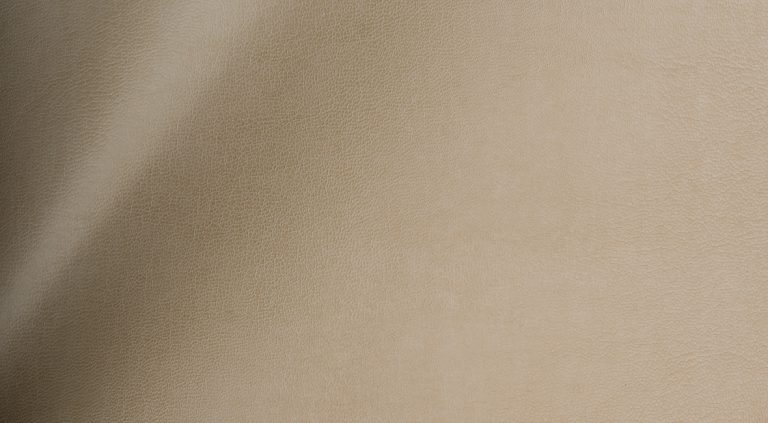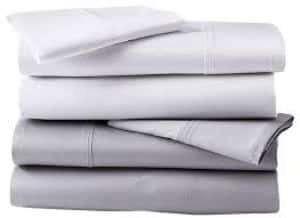Netting Fabric: History, Properties, Uses, Care, Where to Buy
Table of Contents
- 1 Introduction to Netting Fabric
- 2 What is the History of Netting Fabric?
- 3 Properties of Netting Fabric
- 4 How is Netting Fabric Made?
- 5 Where is Netting Fabric Made?
- 6 Common uses of Netting Fabric
- 7 How to care for Netting Fabric?
- 8 Where to buy Netting Fabric?
- 9 Best Netting Fabrics
- 10 Netting Fabric Buying Guide
- 11 Conclusion
Introduction to Netting Fabric
As a fabric, net or netting refers to a material in which the strands are joined, coiled, or tied at their points of contact, resulting in an open-weave pattern. There are various ways to use the net, and it comes in various forms.
A wide range of qualities can be found in the netting fabric, depending on the type of yarn or filament employed while making the net.
| Topic | Pros | Cons |
|---|---|---|
| Introduction | – Versatile fabric with open-weave pattern | – None |
| History | – Introduced by India’s Mughal dynasty | – None |
| Properties | – Varies in transparency and breathability | – None |
| Manufacturing Process | – Can be made from any fiber | – Fragile knitted net fabrics should be avoided |
| Production Locations | – Mostly produced in Asian countries | – None |
| Common Uses | – Used in daily wear, fishing, tents, sewing, dyeing, etc. | – None |
| Care Instructions | – Can be easily washed and ironed | – None |
What is the History of Netting Fabric?
According to experts, India’s Mughal dynasty is credited with introducing net fabric. Hand-knotted fibers were used to create geometric designs on the material of conventional nets. John Heathcoat created the first net-making machine in 1809.
Properties of Netting Fabric
- The permeability of net fabric is one of its most important characteristics. Based on the material used and the twisting style, various types of net fabric have varying degrees of transparency.
- The textile is made more breathable by the netting’s microscopic perforations.
- Diverse net fabrics have different knitting patterns. Some have knot arrangements that can’t easily be identified, while others are meant to be seen.
- The fabric takes the shape that the garment maker wants it to because of the knotting pattern. The knot’s rigidity is proportional to its size and the substance it is composed of.
How is Netting Fabric Made?
There are knots or fused thermoplastic strands at each site where the yarn meets each other in a net or netting construction. The pattern on the cloth may be in a square, octagonal, or hexagonal layout. The sizes of the cloth range from coarse to fine, which makes it simple to locate and switch between them.
It is possible to produce netting that is either soft or firm in texture, and it can be made from any fiber. Hand-knotting threads produced ancient nets at each crossing to achieve a precise geometric shape.
When making light nets, the threads are interwoven rather than knotted; this is the case with weaving equipment that uses either the Tricot or Raschel technique.
The use of knitted net fabrics, which are significantly more fragile, should be avoided, favoring the far more secure option of using knotted net fabrics. They are most regularly utilized in apparel, but they can also be employed as a decorative element by being hung in the windows.
Where is Netting Fabric Made?
The fabric is mostly produced in Asian countries like India, Pakistan, and China, which is the market leader in the textile market.
Common uses of Netting Fabric
Netting fabric is used for various garments along with different products.
Daily wear
The fabric is used in traditional Indian wedding dresses like sarees. It is also used to make shirts and suits for formal wear.
Fishing
Mass fishing requires nets. This robust yet flexible fabric can handle weight while being small and portable. When trawling, fishers use netting because it’s strong enough to carry big loads of fish.
General Uses
Tents use nets. The openings allow air to travel through yet don’t trap bacteria or insects. Netting is used in baggage to create clear, ventilated bags.
Sewing with Netting Fabric
Net fabric is versatile and needs to be sewed with care because of the various holes on its surface, although it can be easily cut using a rotary cutter and sewed. One should use the correct sewing accessories and sewing notions and supplies for a perfect result.
When sewing patterns and designs on the fabric, ensure your seams are well-trimmed. The sewing threads used can be All-purpose or polyester based on the fabric’s composition. You should use the best sewing machines available, like the Brother SE600 for effective results on your fabrics.
Using these little tips and tricks, you can easily sew your mesh fabric according to your taste and preference.
Dyeing with Netting fabric
Even though it may be unheard of, net fabrics can be dyed. The process is useful for designers and consumers with unique styles and preferred designs.
The fabric can be dyed depending on its composition of the fabric. If made using synthetic threads, the Rit All-Purpose Liquid Dye can be used as the best fabric dye available.
How to care for Netting Fabric?
Net fabrics aren’t so hard to care for and can easily be washed and ironed without a hassle.
Washing
- When it comes to cleaning nets, nothing beats a good old-fashioned hand wash.
- Two capfuls of Delicate Wash or a spritz in cool water will suffice.
- To ensure that the soap is distributed evenly, place the object in the water and gently stir the water with your hands.
- Up to 20-30 minutes can be spent soaking the fabric in the tub of water.
- Remove the detergent remnants by rinsing well with cool water until no detergent remains.
- Avoid wringing. Instead, remove the water from the fabric.
- If you want to machine wash, set the machine to a delicate cycle and the spin to low.
- Add fabric softeners.
- The fabric can be dried by air-drying it on a flat exterior
Ironing
- Using a shark steam iron, press the fabric on the wrong side
- Use a low heat setting and a press cloth made of cotton to remove wrinkles
- Use pins to ensure the fabric stays in place
Where to buy Netting Fabric?
Netting fabric can be acquired from fabric and garment retailers. Clients can also acquire netting fabric from online retailers and websites like https://amzn.to/4b6kxLB and Amazon, which have the best Netting fabric available, like Mosquito netting or Nylon netting fabric.
It can be sold in several ways depending on the seller;
- By yard
- By Inches
- Can be cut to order
Netting fabric is exactly what it sounds like. The yarns are looped and knotted to make open spaces between, resulting in a net-like pattern and appearance. There are different types of netting, with different opening shapes and sizes. Netting can be made from different fibers, but nylon is often used. Netting can be used for many different projects including apparel, accessories, craft projects, utility purposes, and more.
Best Netting Fabrics
Here are our netting fabric reviews.
1. Nylon Netting Fabric
This nylon netting fabric does have larger holes than some other netting fabrics. This netting is extremely budget-friendly, with fabrics that can be purchased at just over one dollar per yard. This line is also available in over thirty different colors. Netting fabric can be used for costumes, craft projects, petticoats, kitchen accessories, and more.
- This netting should be hand washed and let drip dry
- Netting is very lightweight and is made from 100% nylon
- Available in 70” widths
Shop Now on Amazon for Fabric Check Today's Price on Amazon
2. Russian Netting
This nylon netting forms diamond-shaped openings. This line is available in both black and white and can be purchased for just over six dollars per yard. Netting is a very popular option for birdcage veils, crafting, and making accessories like fascinators.
- Hand wash, drip dry
- This very lightweight netting is made from 100% nylon
- Available in 18” widths
Shop Now on Amazon for Fabric Check Today's Price on Amazon
3. Mosquito Netting
This netting comes in grey, white, and black. The netting is tightly woven from nylon fibers to help keep mosquitoes and other bugs out. This netting features a crisp hand and is very lightweight. Best of all, this netting is quite versatile and can be used on porches, for tents, and more.
- Available in 56” widths
- Netting is made from 100% nylon
- Machine wash, tumble dry on low heat
4. 54″ Diamond Netting
This netting comes in black, white, and two shades of blue. This fabric features a stiff hand and small diamond holes. Netting is versatile and can be used for many projects including costumes, petticoats, tutus, dresses, accessories like veils and fascinators, crafting projects, and more.
- This very lightweight netting is made from 100% nylon
- Available in 54” widths and has a slight amount of stretch
- Hand wash, drip dry
5. Polyester Netting Fabric
This netting fabric features a leaf design printed on a netting base. The fabric is quite realistic looking and could be used for hunting items like blinds, or stand coverings. Since the fabric is so versatile, it could also be used to add to apparel items for extra camouflage.
- Machine wash, tumble dry
- Available in 60” widths and can be purchased for under five dollars per yard
- Fabric is very lightweight and is 100% polyester
Netting Fabric Buying Guide
Netting fabric is generally quite budget-friendly. The fabric is quite versatile and since it comes in so many different sizes and types, can be used for a whole host of projects. Netting can be used to make costumes, tutus, petticoats, dish scrubbers, hunting items, mosquito nets, for apparel items, accessories like fascinators and birdcage veils, and more!
Netting Prices
Netting is usually very affordable. Some lines of netting can even be purchased for around a dollar a yard, while others range up to or just over the five-dollar a yard mark. You might not have thought about using netting for projects before, but it is such a piece of great fabric and is so versatile that it can be used for many different projects, including more utilitarian uses.
Projects for Netting
For some projects, netting can be a great alternative to using tulle. The two are actually not the same. Netting can also replace tulle in some petticoats. Netting comes in a ton of different colors. Even printed netting can be purchased. You might not have realized how many different uses netting fabric actually has. Birdcage veils are extremely popular, and fascinators and costumes are always a lot of fun to make. Netting’s often low price point makes it a very attractive fabric to work, sew, and craft with.
Recommended Reading:
- Chapter 1: The 7 Sewing Essentials for Beginners
- Chapter 2: The Beginner’s Guide to Sewing Machines
- Chapter 3: The Ultimate Guide to Setting up your Sewing Room
- Chapter 4: Everything You Need To Know About Sewing
- Chapter 5: Sewing Fabric 101: A Virtual Tour of the Fabric Store
Conclusion
In terms of textiles, the Net is one of the oldest. Traps for wild animals were built by primitive men using nets. The fabric has been around for a long time and is used for various products and apparel.
Sources









